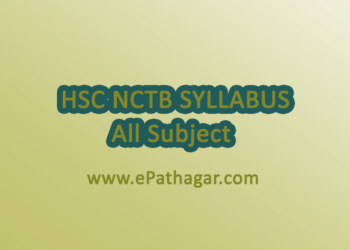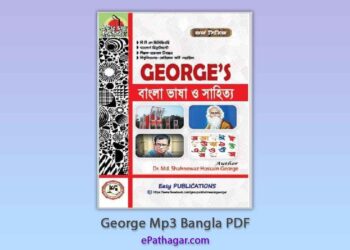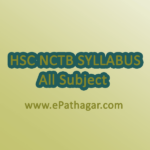In the realm of Bangladeshi literature, few names echo as profoundly as 1971 Humayun Ahmed. His pen crafted tales that transcended time, and among his many works, the 1971 novel stands as a poignant testament to his literary prowess. Let’s embark on a journey through the emotional labyrinth woven by Ahmed’s words.
1971 Humayun Ahmed: The Literary Maestro
Before delving into the emotional tapestry of the 1971 novel, it’s essential to understand the man behind the masterpiece. Humayun Ahmed, a literary maestro of Bangladesh, reshaped the landscape of the country’s literature. His ability to connect with readers on a visceral level marked him as a luminary in the literary sphere.
Set against the backdrop of historical turmoil, the 1971 novel emerged as a chronicle of the times. Ahmed, deeply moved by the socio-political landscape, found inspiration in the stories of resilience amid adversity. In an emotional symphony, he turned the novel into his canvas, infusing every stroke of the pen with the passionate intent to depict the human experience during a tumultuous period.
Characters and Their Emotional Arcs
The characters in the 1971 novel are not mere figments of imagination; they are vessels carrying the weight of emotions. With meticulous care, he sculpts protagonists and antagonists alike, mirroring their emotional arcs to resonate with the highs and lows of the human condition.Ahmed’s ability to breathe life into his characters remains unparalleled.
Plot Summary
Navigating the intricacies of the plot, he takes readers on an emotional roller coaster. From the tender moments of love to the heart-wrenching realities of loss, every page resonates with a raw authenticity that refuses to be confined within the boundaries of fiction.
Ahmed, a master weaver of themes, delves into the core of human existence. Love, loss, and resilience emerge as prominent motifs, interwoven with astute political and social commentary. The novel becomes a mirror reflecting not only the characters’ lives but also the collective consciousness of a nation.
Humayun Ahmed’s Writing Style
Ahmed’s narrative techniques are a literary symphony, orchestrating emotions with finesse. His use of emotional language is a stroke of genius, creating an immersive experience for readers. The words leap off the page, wrapping the reader in a world where emotions aren’t just described but felt, creating an immersive experience that resonates deep within.
Critics showered accolades, and readers embraced the novel with open hearts. Awards adorned Ahmed’s literary journey, but the true measure of success lay in the emotional connection forged between the words and the hearts of the readers. The novel became a shared experience, a conversation between the author and a nation.
Legacy of the Humayun Ahamed 1971 Novel
Decades have passed, yet the 1971 novel’s influence persists. It has become a rite of passage for readers, passing down from one generation to the next. Ahmed’s legacy endures, not just in the pages of a book but in the hearts and minds of those touched by his storytelling prowess.
Within the pages of the 1971 novel, readers find not just a story but a reflection of their own journeys. Personal stories emerge, and a community of readers forms, bound by the emotional resonance of Ahmed’s words. The novel becomes a shared emotional pilgrimage, connecting diverse individuals through the universality of human experience.
The novel’s popularity refuses to wane. Sales soar, and reprints are a testament to its timeless appeal. Beyond the printed page, the novel has inspired adaptations and homages, further solidifying its place in the cultural tapestry of Bangladesh.
Also read: Opekkha Humayun Ahmed PDF Free Download
Exploring the Novel’s Impact on Society with 1971 Humayun Ahmed
The novel bursts beyond the realms of fiction, its impact pouring into society, touching hearts, and influencing perspectives with emotional resonance. Social and cultural reflections embedded in the narrative become a lens through which readers examine their own reality. The novel’s educational significance is undeniable, offering insights into a pivotal period of history.
As the novel transcends borders, translation becomes a challenge. Language barriers threaten to dilute the nuances of emotion woven into the original text. Preserving the emotional resonance becomes a delicate dance, a testament to the universal language of human emotions.
Humayun Ahmed’s Lasting Legacy
The 1971 novel is but one chapter in Ahmed’s literary legacy. Beyond this masterpiece, his contributions to Bangladeshi culture are vast. His words continue to inspire, challenge, and comfort, a testament to the enduring power of storytelling.
In concluding this exploration of the emotional tapestry within the 1971 novel, we invite readers to embark on their own journey. 1971 Humayun Ahmed‘s words don’t merely rest within the pages of a book; they extend an emotional invitation, beckoning readers to delve into the profound depths of the human experience. As you turn the last page, may you carry with you the echoes of a narrative that transcends time and touches the soul.
Frequently Asked Questions
Ques: Is the 1971 novel based on real events?
Ans: While inspired by historical events, the novel is a work of fiction crafted by Humayun Ahmed.
Ques: Why is the novel considered a literary masterpiece?
Ans: The novel is celebrated for its rich characters, intricate plot, and the emotional depth woven into every word.
Ques: Are there English translations available?
Ans: Yes, English translations of the novel are available, capturing the essence of the original Bengali text.













This Post Has 2 Comments